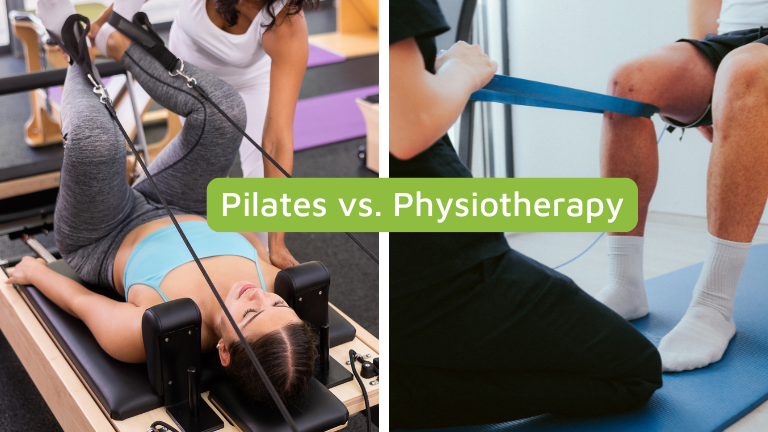
Pilates vs. Physiotherapy: How They Work Together in Rehabilitation
When it comes to recovery and injury prevention, both Pilates and physiotherapy play a crucial role. While they have distinct approaches, they can work hand in hand to help individuals regain strength, mobility, and confidence in movement. Whether you’re recovering from an injury, managing chronic pain, or simply looking to improve your physical well-being, understanding how these two disciplines complement each other can help you make the most of your rehabilitation journey. As a matter of fact, two of our Pilates instructors here at Pilates Connection both have physiotherapy degrees – so we have a deep understanding of biometrics and injury management. You’ll also find we have some of the same equipment in our studio as you would find in a physio room – like resistance bands, balance balls, weights and more.
The Key Differences: Pilates vs. Physiotherapy
Physiotherapy: ✅ Focuses on diagnosing, treating, and preventing physical injuries and conditions. ✅ Utilises hands-on therapy, exercises, and modalities like ultrasound and dry needling. ✅ Aims to restore function and movement after injury or surgery. ✅ Often provided in clinical settings with one-on-one guidance.
Pilates: ✅ Emphasizes controlled movements, core strength, and alignment. ✅ Uses equipment like the Reformer, Wunda Chair or mat-based exercises to enhance stability and flexibility. ✅ Promotes overall body awareness and postural correction. ✅ Suitable for long-term conditioning and injury prevention.
How Pilates Enhances Physiotherapy for Rehabilitation
While physiotherapy helps treat acute injuries and pain, Pilates provides a structured movement practice that supports recovery and reduces the risk of re-injury. Here’s how they work together:
🔹 Building Core Stability – A strong core is essential for reducing strain on the lower back and joints. Pilates strengthens deep stabilizing muscles, reinforcing the work done in physiotherapy.
🔹 Improving Flexibility & Mobility – Physiotherapy may address immediate mobility restrictions, but Pilates helps maintain and improve flexibility through controlled, dynamic movements.
🔹 Enhancing Postural Alignment – Poor posture can contribute to chronic pain and recurring injuries. Pilates retrains the body to move efficiently, complementing the postural corrections made in physiotherapy.
🔹 Supporting Long-Term Recovery – Once physiotherapy sessions end, Pilates provides a sustainable way to continue strengthening and preventing future injuries.
Who Can Benefit from Combining Pilates & Physiotherapy?
👉 Individuals recovering from sports injuries, surgeries, or chronic pain conditions. 👉 Those with back pain, neck tension, or postural imbalances. 👉 Athletes looking to improve movement efficiency and prevent injuries. 👉 Office workers suffering from prolonged sitting-related discomfort.
How to Get Started
If you’re undergoing physiotherapy, speak to your physiotherapist about integrating Pilates into your rehab plan. At Pilates Connection, we work with individuals at all stages of recovery to create tailored programs that align with their rehabilitation goals.
💡 Ready to take the next step in your recovery journey? Book a Pilates class online or contact Liane if you’re new to Pilates Connection and would like to give it a try!



Sorry, the comment form is closed at this time.